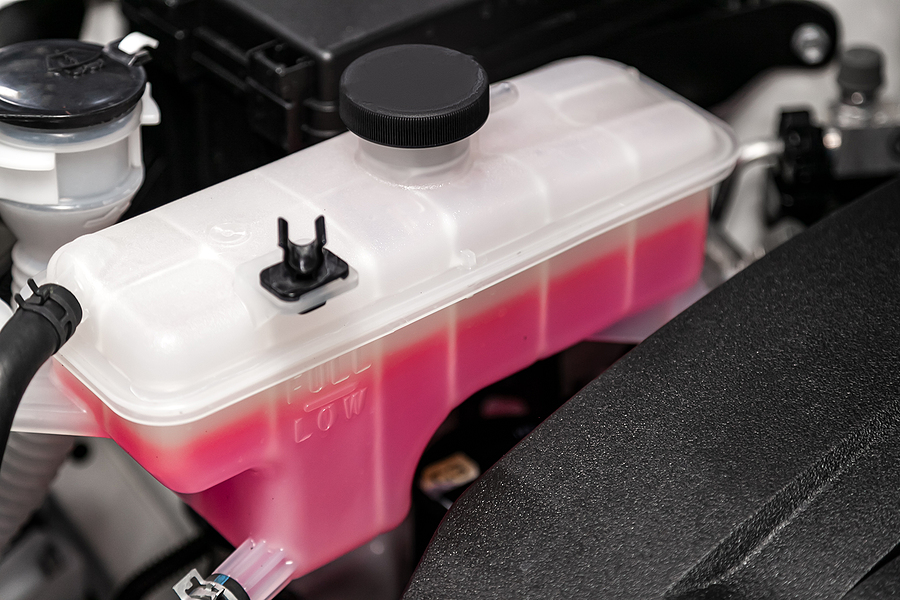Whether you’re a fan of tinkering under the hood or someone who considers ‘blinker fluid’ a real thing, the truth about your vehicle’s well-being boils down to one crucial component – radiator fluid. For car owners, understanding the nuances of this often overlooked automotive fluid can mean the difference between a smoothly purring engine and an unexpected breakdown. In this comprehensive guide, we’ll discuss everything you need to know about radiator fluid, from its composition to the subtle signs that it’s time for a change.

What is Radiator Fluid, and Why is it Important?
Radiator fluid, also known as coolant or antifreeze, plays a pivotal role in keeping your car’s engine cool, not just during the sweltering months but throughout the year. It’s typically a mix of ethylene or propylene glycol with water, designed to withstand extreme temperatures without boiling or freezing.
The significance of this often undervalued liquid cannot be overstated. It circulates through the engine, absorbing heat and carrying it to the radiator where the now-hot liquid is cooled down before it’s sent back to the engine. Without a healthy supply of antifreeze, your engine faces the very real threat of overheating, potentially leading to severe damage and costly repairs.
Signs That Your Radiator Fluid Needs Attention
Your vehicle, like your body, provides warning signs when something isn’t right. Regular checks of your vehicle’s fluid levels can help prevent these warning signs from escalating into more significant issues. Stay attuned to these symptoms that could signal an issue with your antifreeze:
- Engine Overheating: If your temperature gauge consistently runs too high or warning lights illuminate on your dashboard, this is often the first sign of a cooling system problem.
- Coolant Leaks: Spots of brightly colored liquid under your car could signify a leak. Sometimes, this will be accompanied by a sweet, sickly smell.
- Fluctuating Heater Function: A heater that blows warm inconsistently is often an early indicator of low or contaminated antifreeze levels.
- Unusual Engine Noises: Gurgling, rumbling, or hissing sounds could mean your coolant isn’t properly doing its job of regulating engine temperature.
How to Check and Change Your Antifreeze
Checking and changing your radiator fluid is easier than you might think, and it’s a crucial part of your vehicle’s routine maintenance. Here are the steps to keep your cooling system operating at full capacity:
Checking Your Coolant Level
- Locate the Coolant Reservoir: Generally, you can find the reservoir under the hood, next to the radiator.
- Check the Fluid Level: When the engine is cool, check the level of fluid against the ‘full’ and ‘low’ markings on the reservoir. If it’s below ‘low,’ it’s time to top it up.
- Inspect the Color and Consistency: The fluid should be a vibrant color with a clear consistency. Any murkiness or debris indicates it’s time for a change.
Changing Your Coolant
Changing your coolant completely, or flushing it, is recommended every couple of years or according to your vehicle manufacturer’s guidelines. By conducting these checks and changes, you not only ensure your engine’s longevity but also your own safety and that of your passengers:
- Prepare Your Tools: You will need a drain pan, new coolant, a funnel, and potentially a pair of pliers.
- Drain the Old Coolant: With the engine cool, open the drain valve on the bottom of the radiator. Allow the fluid to drain completely into the pan.
- Refill with New Coolant: Close the drain valve, then refill the radiator with a 50/50 mix of coolant and water. Be sure the mixture is suitable for your climate.
- Bleed the System: To prevent air pockets, start the engine with the radiator cap off and refill as needed until the engine reaches operating temperature.
- Dispose of the Old Fluid: Coolant is harmful to the environment, so ensure proper disposal at a recycling center or automotive shop.
FAQs About Coolant
How Often Should I Change My Coolant?
Most manufacturers recommend changing your radiator fluid every 30,000 to 50,000 miles or every 2 to 5 years, whichever comes first. However, consult your vehicle’s manual for specific guidelines.
My Radiator Fluid is Low. What Should I Do?
If you notice that your radiator level is low, top it up with a mixture of coolant and distilled water. Be sure to add the correct ratio specified by your vehicle’s manufacturer.
What Type of Radiator Fluid Should I Use?
Always use the type of antifreeze recommended in your vehicle’s owner’s manual. This will ensure the best performance and longevity for your engine.
How Can I Tell if My Coolant Is Bad?
Your coolant should be clear and vibrant in color. Any changes to its appearance could indicate contamination or that it’s reached the end of its life.
Can I Mix Different Types of Radiator Fluid?
It is not recommended to mix different types of radiator fluid, as this can lead to ineffective cooling and potential damage to your engine. Use the same type of radiator fluid consistently.
Conclusion
Radiator fluid is more than just a colorful liquid in your engine; it’s an unsung hero that keeps your car running smoothly. By understanding its importance and staying vigilant for signs of trouble, you can protect one of your most significant investments – your vehicle. Whether you choose to test your antifreeze’s health yourself or entrust it to a professional, make coolant maintenance a non-negotiable part of your car care routine. Your engine will thank you for it with years of faithful service.
Are you ready to book your winter automotive service with a dependable Indianapolis mechanic? Contact Northeast Auto Service at 317-475-1846 for ASE licensed and trained factory scheduled maintenance and car inspections in Indianapolis, Indiana. We work on all make and model vehicles!
Related Posts:
Why is My Car Engine Overheating?
Check These Five Automotive Fluids Regularly
How to Check For a Radiator Clog
